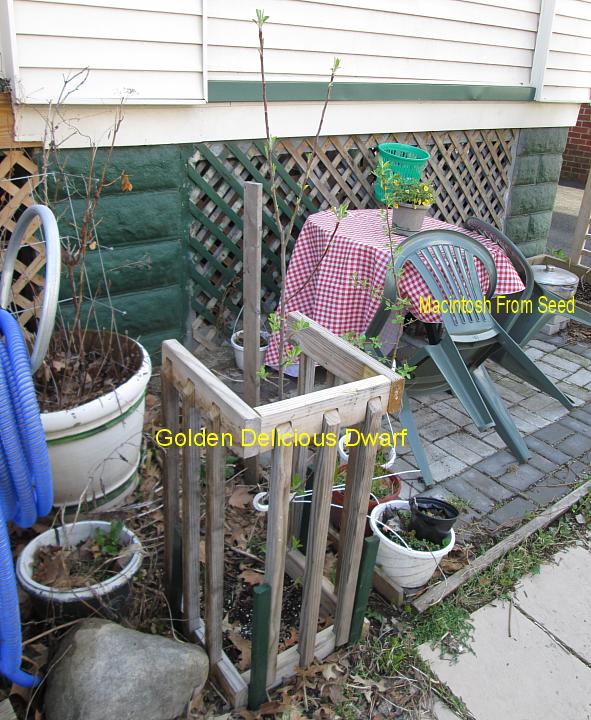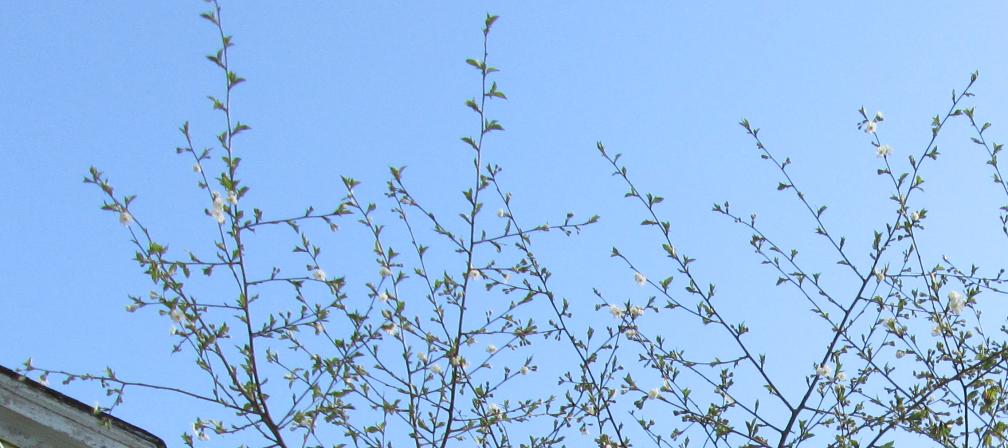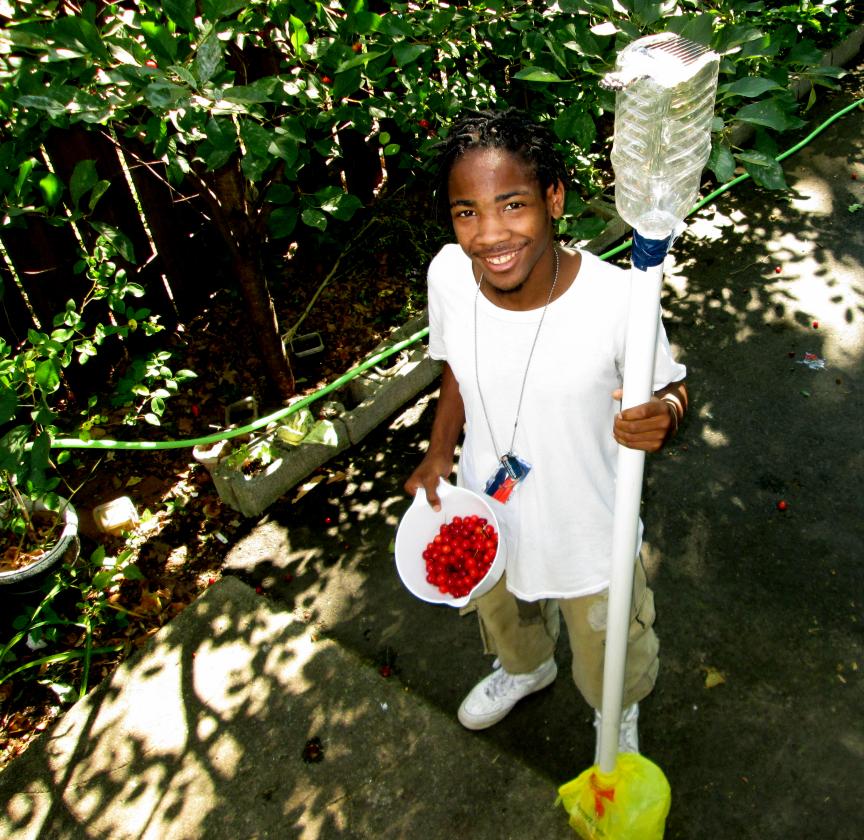Arbor Day 2015
04/24/15
by Jim Gerrish
There's nothing "magical" about
planting trees on Arbor Day, except that it comes in late April
usually past all the freezing weather and before you can do much
work in your garden on the pretty plants and the fun-to-eat
plants. Because it is known to be a good day for politicians to
be photographed with a tree in one hand and a shovel in the
other, being "earth friendly" and "going
green", etc. I had hoped that our local political photo hog
would restore the centennial tree to City Hall last year, but to no avail. So this year I
am ignoring all politicians and just focusing on my own garden of
trees. Perhaps "orchard" is a better word since it is
defined as "an intentional grouping of trees or shrubs that
are chosen and maintained for food, mainly fruit and nuts."
Most commercial orchards group trees of one type or another, but
a home garden orchard can group together a variety of fruit
bearing trees, which is a more ecologically sound practice to
avoid blights, fungi and plant diseases.

A car accident took out my front right fence last January,
but pieces from the fence were salvaged to create the small
wooden enclosure to protect the Golden Delicious Apple Dwarf
tree, which is in its second year of growth. It is not expected
to bear fruit for another two or three years of growing, and that
is why it needs protection and a lot of patience. The Macintosh
Apple tree, which I grew from seed four years ago, may take
another five to ten years to begin to bear fruit. Unlike
tomatoes, beans and peas, which live, produce crops and die all
in one summer, fruit and nut trees are for the long term
gardener.

Another concern of the fruit & nut tree
grower is cross pollination.
You usually can't just grow one variety of tree by itself. It
needs a companion tree to provide cross pollination, carried out
by friendly bees and other insects, so both trees will produce
fruit. My Golden Delicious Apple tree will have a Red Delicious
Apple tree near by, but my two pear trees grow right next to each
other since they are varieties that will grow up straight and
bear fruit around the center trunk.
The long term nature of tree growing is a good
reason why you should encourage the city to begin growing fruit
and nut trees in city parks, instead of just planting trees that
provide shade and drop leaves into our gutters. Most fruit and
nut trees also have blossom displays in the spring, so if you
want the best of blossoming decorative trees that provide useful
edible products for times of need, look no further than these and
ask your politicians to promote "green" that can be
eaten.

Real Cherry Trees don't have the showy blossom
displays of the Japanese Cherry Blossom Trees found in Branch
Brook Park, which produce no edible cherries. Instead, like my
backyard Cherry Tree shown above, they have smaller, less showy
blossoms that soon turn into real cherries that can be harvested
and eaten before the start of summer, or turned into jams,
jellies and other preserved fruits that can be enjoyed all year
long.

See Qua-Fiki
harvesting cherries in 2013
East Orange is a city of apartment dwellers, who
have no private land on which to grow trees of their own, but
that doesn't mean you can't grow a tree or two right inside your
own apartment. If you have a sunny window, or maybe a balcony
outside a window where you can place a small greenhouse, you are
all set. Failing that, investigate the new market for grow lamps
that can even use solar powered electricity that won't cost you a
cent once you invest in a solar panel and battery system for your
dark shadowy dwelling. Best of all, when you move to a new
apartment, you can take your "farm" with you!
Sources:
Prices and sources change over time, so do your own homework
and you'll find similar products that cost less from other
sources.




